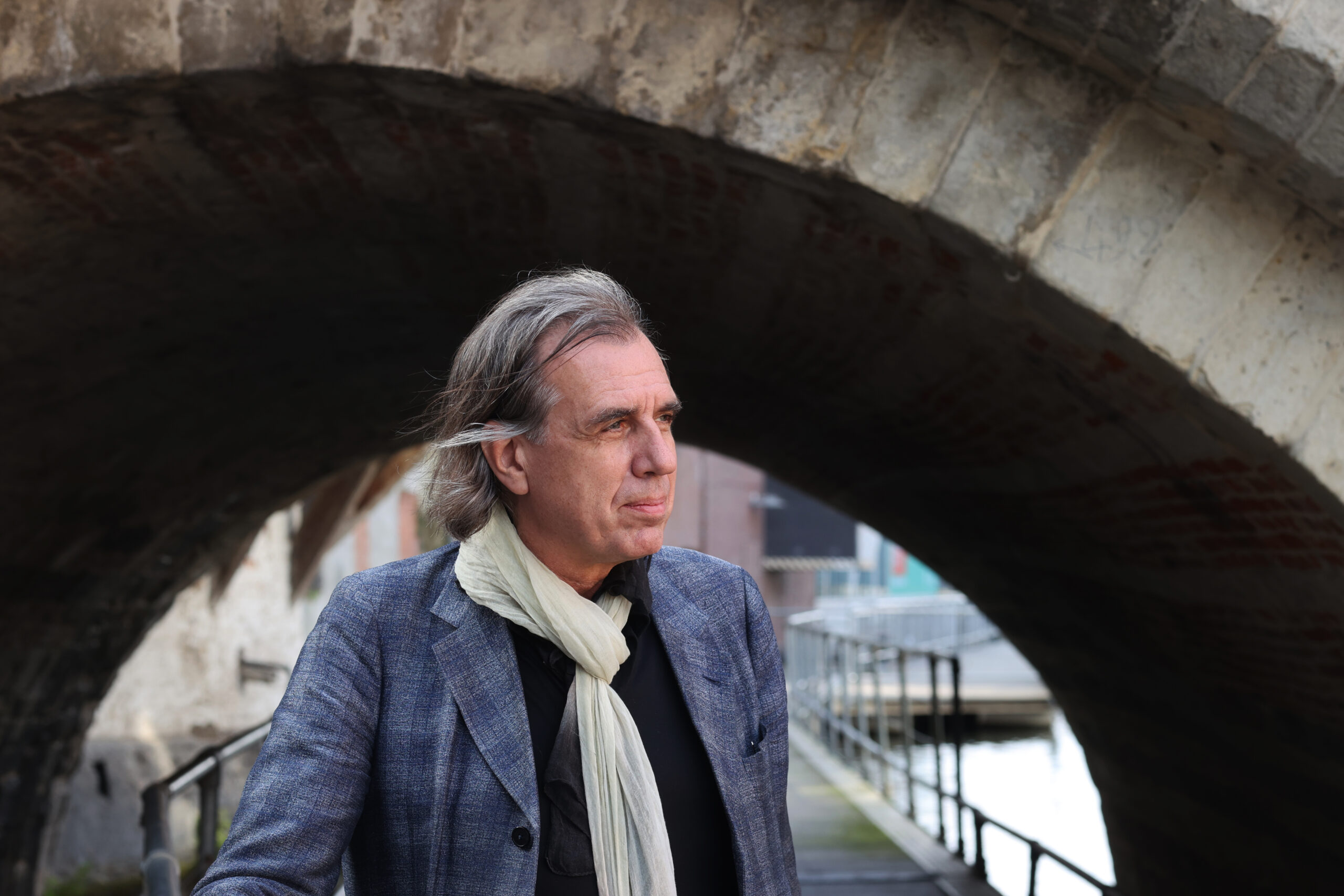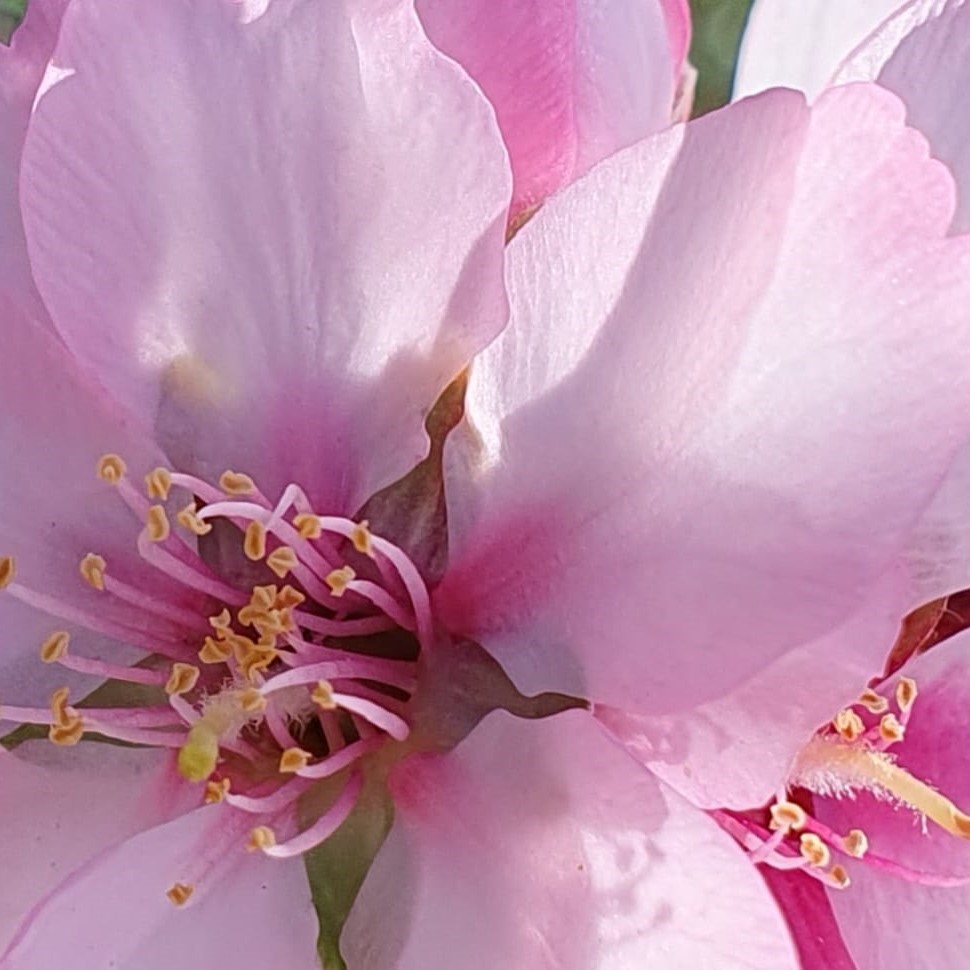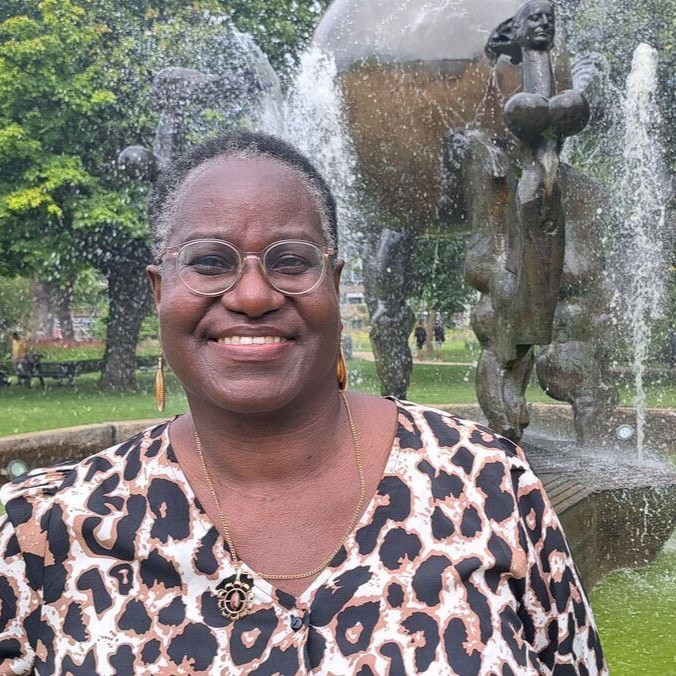Auteur: Greg Suffanti
Tijdens de boekpresentatie Amor Fati raakten Greg Suffanti en Nivedita Yohana in gesprek over de boommetafoor — en geïnspireerd over haar betekenis van onderlinge verbondenheid tussen bomen en andere organismen als model voor wereldburgerschap. Daarop volgde een brainstorm mailuitwisseling tussen de Quest for Wisdom foundation kerngroep; met als resultaat twaalf schilderijen van Gregs hand en een uitwerking van de boommetafoor door Nivedita: “Roots of connection: The tree metaphor” en door bomenspecialist en ecoloog Tycho Muijen “Trees of life”. In dit artikel is Greg zelf aan het woord over zijn ontmoetingen met bijzondere bomen. Het zijn toelichtingen op zijn schilderijen aangevuld met fragmenten uit de mailstorm (weergegeven als citaten).
Introduction
Greg: “I like your statement Heidi, that like Trump, we are also looking to change the world! Just in the opposite direction! The difference being our approach is ‘rooted’ in truth and balance … For the benefit of all to grow and thrive.
Deep-rootedness as an inner compass to a world on fire I also find highly evocative. Perhaps an idea that could be translated into various types of creative efforts? Like writing, singing and the visual arts? This multi-pronged approach could be one of the potential ways to expand on and share in helping others to understand what world citizenship means to themselves— and others. A Series – Roots of Global Citizenship. An inspiring idea!
I also feel/felt like certain trees were my friends… Or protectors, like the giant sycamore just outside my bedroom windows. Perhaps a way to tie this idea of trees/friendship to one’s own sense of interconnectedness and sameness with others? Also, the challenges of uncovering one’s own truth…. or Authenticity…, to use your word Heidi. Interesting perhaps, the idea of untangling your own ‘roots’ to become more ‘rooted’, and to connect to other ‘roots’ to really be able to flourish and help other ‘root’ systems to thrive?…. Yet another possible metaphor of sameness idea to explore? Anyway, I’d never really thought about my own inner relationship with trees….
Perhaps others have similar unexplored avenues to explore? I’m just starting to look at my own relationship and am finding it worthwhile to examine something I basically always took for granted! And yet, in retrospect, see how incredibly important this relationship has been to my own sense wholeness and feeling of being ‘home’!”
First encounter
Last week’s visit to Groningen for a few days was my third visit to the city, this time staying in an apartment just across the street from the Noorderplantsoen. Trees, lots of trees…. But sometimes certain trees stay in my memory and this got me thinking about my own relationship to the trees around me…. that actually, I’ve always had a relationship to trees…. To the palm trees of Honolulu, where I was born, to the sycamore and plum trees in our front yard of our home in Washington, DC, where I grew up.
In this first aquarelle, Metaphors of Sameness, Memories of Trees VIII, I’ve written a poem about my experience in Groningen. I’ve suggested lots of new spring growth (not yet actually happening) to allude to the new life of spring and it being a metaphor for rebirth, renewal and hope.
Part One
Another week in the new year, and a new world order taking shape.
Tariffs? “Yes!,” Say the US of A!
Well, sort of, maybe, whip-sawing changes with
whiplash inducing vacillations, another
30 day reprieve for Canada and Mexico,
with China it’s another story.
Is Europe now alone?
And what does that really mean?
I watch,
and read,
And think, “I’m not young, I’m
almost 61!”
Should I engage, OR,
be silent like the Tree?
Can I be both?
Memories are like leaves dying
on the trees in fall, blown to
oblivion in a fierce autumn storm.
“Don’t hold fast,”I tell myself.
“Let go!”
Go to your roots and
wait for spring.
“Nourish yourself!”
Listen to the trees!
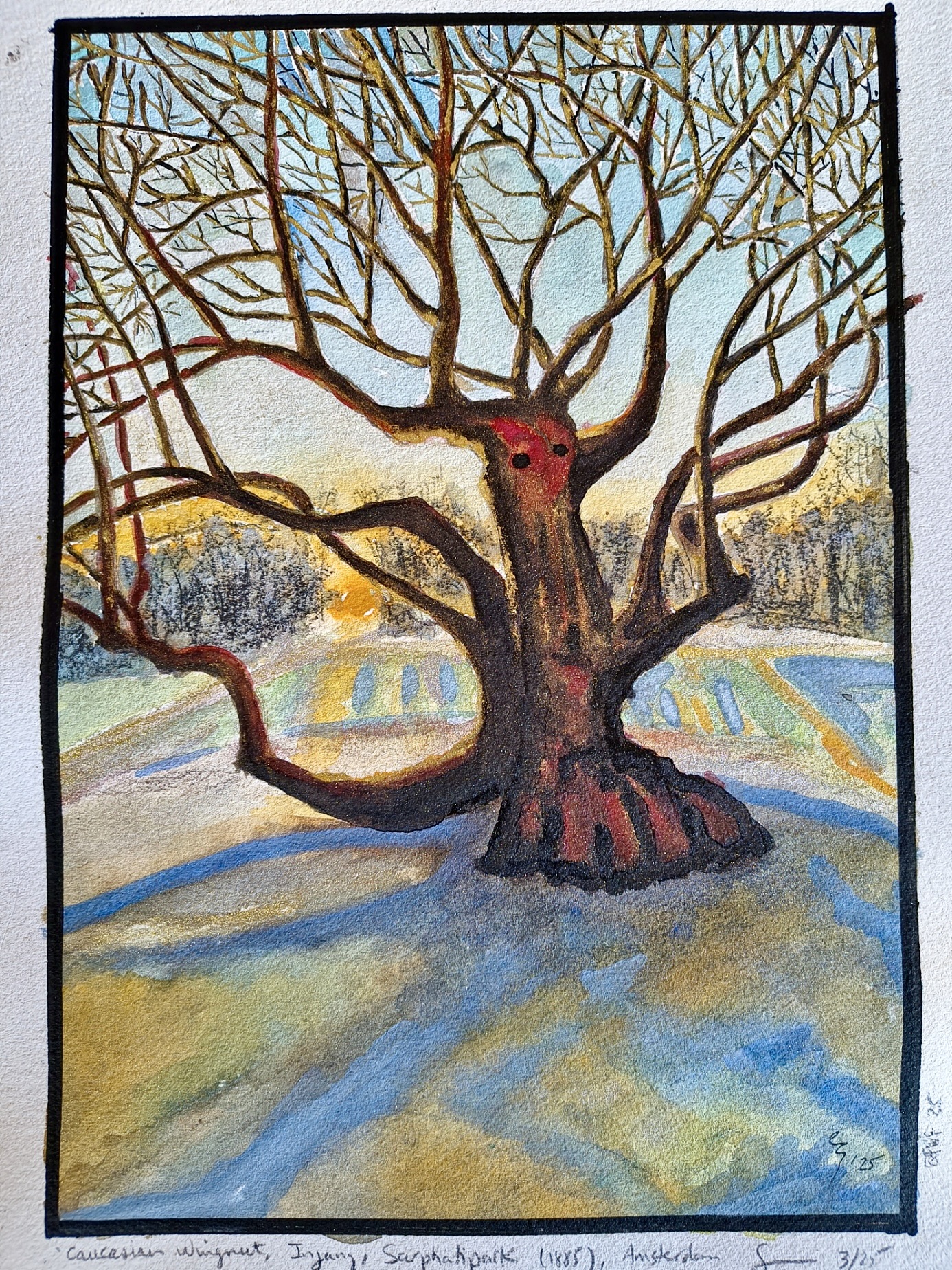
Aquarel Greg Suffanti
Part Two
You are not a stranger,
I’ve seen you before. A memory, or rather,
memories, now that I’m seeing you
for the third time. A sort of friendship,
the three of you!
Naked, gnarly branches of springy green
shoots on branches, revealing,
outwardly, one aspect
of a constantly changing life.
The shiny palm trees in our garden
in my birthplace, Honolulu.
The sycamore and plum trees in our
front yard in the Washington, DC home
of my youth.
And to all my other, anonymous, non-judging friends,
my companions everywhere I go,
I say,
“Thank you for being there for me!”
Existential touchstones
We’ve had such beautiful weather, I feel like I watch the world around me change daily, as flowers and young buds and springy green leaves seem to change color and shape at the same speed as the political world around me. I hope nature’s impressive show is inspiring for you in it’s reassuring assertion of birth and renewal. And beauty!
Second encounter
The next aquarelle, Caucasian Wingnut, Ingang Sarphatipark (1885), reflects the speed of spring, as I’m working from a photo I took at the beginning of the month… And it’s a wintery portrait indeed! The inspiration came/comes from my daily walks, seeing this tree for 20 years now. I’m trying to define my relationship with certain trees in my life… Almost as an ode of thanks, which ultimately it is! The Caucasian Wingnut was planted in 1885 and is listed in the Monumental Trees of Amsterdam.
The inspiration for the short story came from thinking about how certain trees are like touchstones in my life… Part of my personal story. “Existential touchstones” (Means & Cooper, 2005) are those experiences in life which have been highly significant for you and have deeply affected you in some way.
I used to have a bike, and was asked often when I first moved to Amsterdam, 25 years ago, from America, if I could ride a bike before moving to Holland? The answer is “yes”. However, now I’m a walker. No bike. No car either. Turning 60 meant I’m no longer trying to be stoic, just trying to stay true to the things that work for me. Like walking… I go when I want and at a pace that lets me think and enjoy the beautiful city around me. And how I feel so fortunate to live on the Jozef Israëlskade… I’ve never tired for a second, watching the rowers and boats pass by, or the sun or moonlight glistening and glimmering on top of ever-moving water, the giant poplars dancing in the wind, swaying to the music.
There is a sort of anxiousness to my gait, as if I’m in a hurry, someplace I need to be. It is early spring. 4th of March 2025. My daily walk. Sunrise. The warming sun seems to be pulling the buds from their branches. It’s the lemony-green nubs I notice first on the willow tree. The cherry trees lining “my” canal are just barely hinting at their flowery pink show still a few weeks away. I go right on the Pieter Lodewijk Takstraat, walking between the two magnificent yellow Brick buildings of the Berlage Lyceum, zig-zagging my way to the 2e van der Helststraat, crossing over the Ceintuurbaan, waiting for the friendly embrace of “my” Sarphatipark, happy to see an old friend.
I go right on the Eerste Jan Steenstraat, following the contours of the park, listening to the birds singing their early morning songs. Halfway I stop, and walk a few steps into the park. I’m greeting an old friend, “my” Caucasian Wingnut, my existential touchstone. Alone, there you stand, spreading wide and languorous, like a queen. All the other trees are like a backdrop… Mere scenery. But you are more than just decoration, my trusted friend!
Seeing you always makes me feel better. Reassured. Home. I am no longer in a hurry.

Aquarel Greg Suffanti
Third encounter
Existential Touchstone II, Uitzicht Slaapkamer is a portrait of the Magnolia tree outside my bedroom window in full, fleeting bloom. That particular view, with the Berlage Lyceum in the background, and a white wooden bridge spanning the Jozef Israëlskade, are precious to me…. It’s the view that says ‘home’ to me. It’s a view that brings me a continuous flow of joy as I never tire of it and feel so fortunate to be able to live in such a lovely location. It represents so much of what I love about living in the Netherlands….. An attempt to give equitable living arrangements, through social housing, to everyone. I’m a lucky participant in this system and my life is truly enriched by it!
For a few weeks in mid-March to early April the pink Magnolia tree outside my bedroom window puts on a flowery show, in unison with the many cherry blossom trees lining the Jozef Israëlskade where I’ve lived for the last twenty years.

Aquarel Greg Suffanti
In Chinese and Japanese cultures, cherry blossoms represent the fleeting nature of life. Magnolias are similarly short-lived flowering wonders, their delicate, large petals falling randomly, and almost immediately after blooming, decorating the ground with strips of pink, silky strips of petals.
Although the garden is technically mine, my late neighbor Peter, who lived next door, (which is around the corner) asked if he could indulge his love of gardening in my sun-filled corner garden. He did a beautiful job, and we’ve all benefitted through the years. Also, the five apartments that comprise my next door neighbors’ building are all social apartments…. Like mine. Something increasingly rare to find. I’ve watched through the years, as tenants in my building left, only to have the apartment turn into a koopwoning. One after the other. Nothing against my newer, younger and wealthier neighbors, but I happily share my garden out of solidarity…. And I enjoy seeing them outside, chatting or reading a book in the warm sunshine. They’ve always been respectful and I enjoy their efforts to keep the garden always looking well-tended.
So, the Magnolia tree, like the garden itself, is a symbol of the kind of beauty that can happen when people work together and share. Everyone benefits, including the passersby who enjoy the ever-changing garden, or maybe Peter’s Black Buddha bamboo swaying wildly in the wind? Peter died years ago, but his garden lives on. Our garden. Our Magnolia. My existential touchstone.
Fourth encounter
Jozef Israëlskade 23 Maart, 8:59 – #11 of the Total Tree Series, also in Roots of Connection: The Tree Metaphor and in Trees of Life, I kept thinking about Monet’s Impression, Sunrise, as I was trying to simplify my composition and rely more on the “impression” this very familiar tree was giving me at that specific, fleeting moment. This was similar to last week’s aquarelle of the Magnolia tree in my garden. Both are about personal feelings…. And trying to capture the essence of those feelings through simplifying the composition to its basic essence.

Aquarel Greg Suffanti
Ironically, both aquarelles, in their reduced simplicity, were surprisingly complicated and time consuming in execution. You’ll have to decide weather or not I achieved my goal, as it’s impossible for me to judge weather someone else “sees” my feelings in these two pieces? I included the date and time in the title because these beautiful flowering giants begin to lose their petals almost from first flowering. And of course, now its two weeks later, and this particular cherry tree is now more green leaves than anything else, with just a hint of pink blossoms here and there. Fleeting, like all of life.
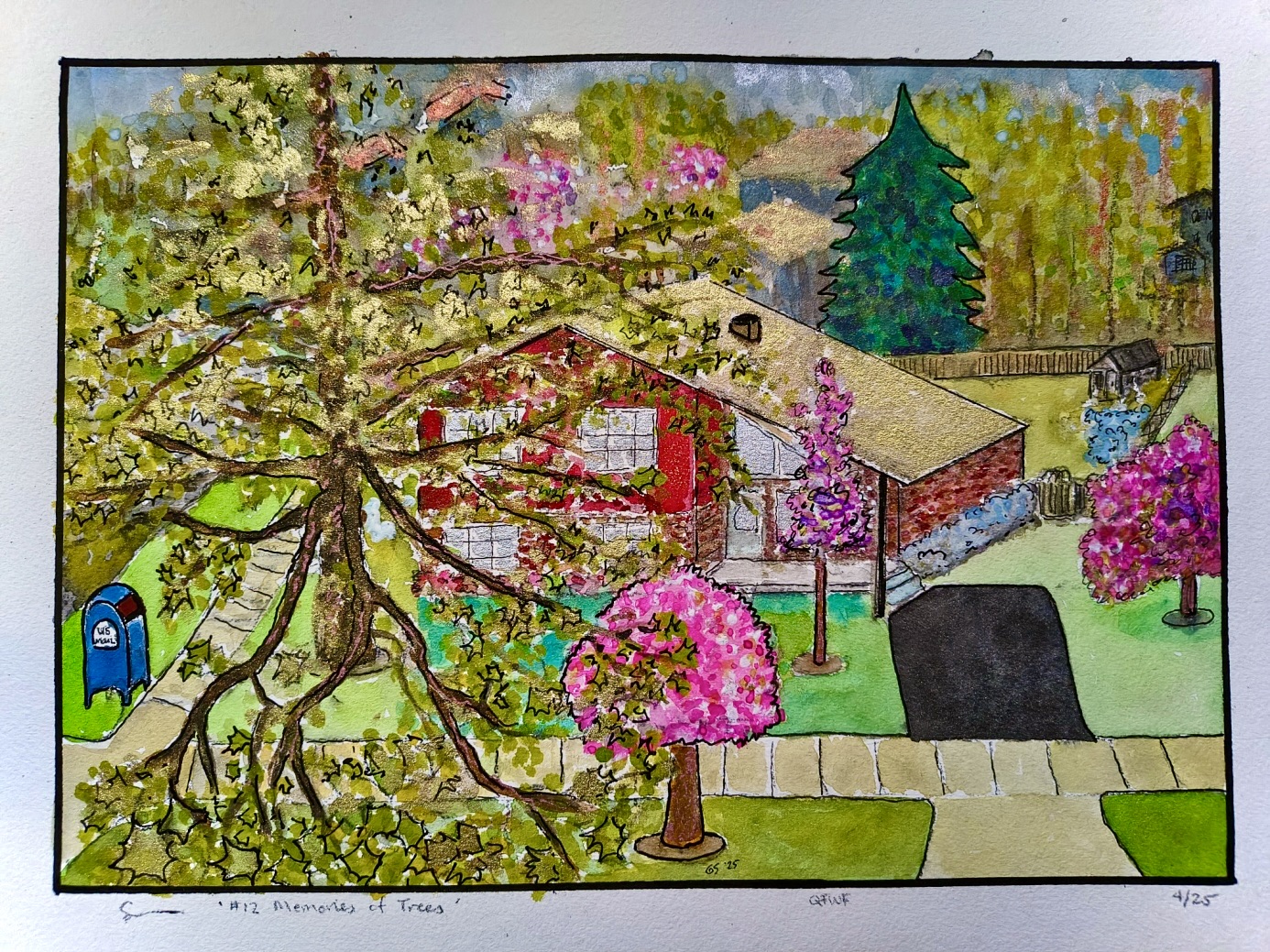
Aquarel Greg Suffanti
Memories of Trees is my recollection of the house I grew up in and the trees all around, which created a park-like setting. We sat on a corner lot with a blue steel mailbox serving the street, with a giant sycamore towering over our house, wrapping its branches around half of it. The large evergreen, the last of three, began life as a tiny sapling which were given out to all students at the time (1976) to motivate them to plant trees to help make America greener (and cleaner). We were on vacation at Walt Disney World at the time, and so my brother and I missed the opportunity. I enjoyed watching the evergreens quickly grow, and somehow felt I’d missed out on getting my ‘own’ tree…. Until they started getting so big they blocked light and showered part of our backyard in needles. The cherry trees were all lost to a blight a good twenty years ago. About ten years ago the sycamore had grown so large that it needed to be cut down to prevent it causing damage in a storm. Thus, these really are memories of an image that no longer exists! Just like all memories…. One way or the other.
Co-Inspirators Dialogue
De bomen inspireerden Greg. Zijn reflecties inspireerden op hun beurt weer de kerngroep, tot een ‘Co-inspirators dialogue.’
Heidi: “Je aquarel en foto van nr.12 roept een sprookjesachtige sfeer op! Een beeld uit je herinnering aan een Giant Sycamore, met een bijzonder verhaal:
Uit een andere tijd, een tijdgeest van “Make America Greener” (ipv …“Great again”…) waarin de studenten zaadjes kregen om bomen te planten! Jij hebt deze in 1976 geplant en deze gewortelde vriend groeide mee met jouw kindertijd naar volwassenheid… En je vertelt ook iets over de kwetsbaarheid van zelfs zo’n reus – juist de gigantische takken aan de stam worden breekbaar en in een menselijke biotoop betekent dat gevaar voor brekende takken door een storm… Daarmee laat je ons ook nadenken over de interconnectedness tussen bomen en mensen: zoals de mensenwereld de natuur heeft “gehumaniseerd” zo ligt de verbindende kracht van de bomen om de mensenwereld te “ecologiseren”: het vergroenen staat voor die ondergrondse verbindende kracht!
Naar ik hoop kunnen wij als Quest KernKring en Wisomseekers voor een wereld in nood, die kracht met elkaar ook oproepen en levend maken door middel van jouw beelden en andere kunstvormen als “Circle of Concern” en zo deze ethos uitdragen naar ruimere kringen!”
Robin: “Thanks for sending your wonderful exchanging texts and images. At first, I thought it’s about the hidden life of trees but soon I recognized the metaphor for us human beings. You made a beautiful exploration of the metaphor, and it brings in my mind our first start of the intercultural group at Easter 2024 in the house of Tess. How did we manage to reach out and meet each other? How did we manifest the normally hidden part and bring it between us in the open and shared space?
We were curious and we were pioneers as we concluded afterwards. We did dare to open up and notice each other. Also, we did dare to notice and speak out about what happened between us and what we found that was different from our daily assumptions. We did meet in real life and passed beyond these assumptions. We could notice what was new in our meeting and at that very moment as we explored fields that arose by this meeting.
In our shared experiences we found a kind of threshold to step over and enter a place to meet and experience where the image of a wave came up. There were different areas to go from there as we found out in collecting the ingredients for the statue that Camile Smeets made together with us. I wonder how it would work with the metaphor of a tree to add these ingredients that we found. Would this work or would a different metaphor be necessary? We did use a lot of art-forms to share these hidden aspects of meeting like theatre, singing, dancing, making music, drawing and making art-work. This helped us to investigate in different directions then by using words only.
I am puzzled how to enter in your exchange of images. Maybe you have a suggestion or a helping question?”
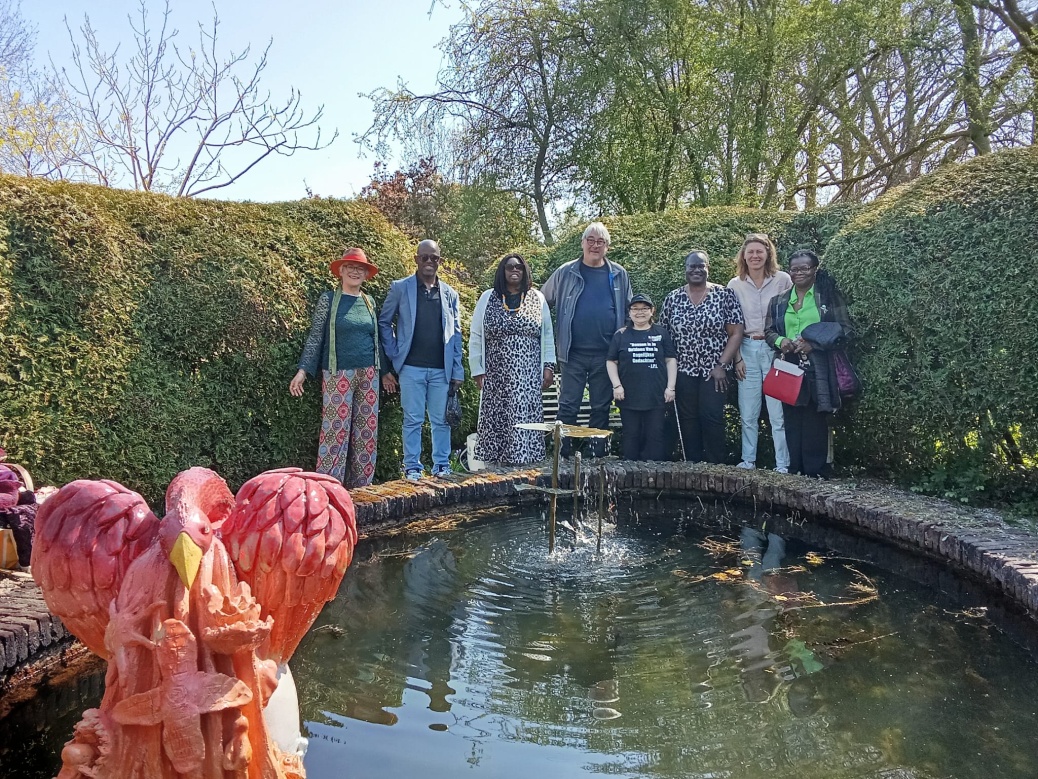
Greg: “Here are some thoughts in reaction to Robin’s thoughts and questions…
- What are some other metaphors for the human condition?
- Is the way we reached out to each other similar to the way tree roots do as well, to support and nurture?
- Is the hidden world of trees similar to our own hidden/hiding from ourselves?
- Do other art forms, like singing, dancing have a connection to trees? Nature? Life/birth/creativity?
- What can we learn from trees? From their interconnectedness and co-dependency?
- Robin, do specific trees, or have trees, lived in your memories… Of people and places?
- What would this world be without trees? How is the killing of forests a metaphor for the way we now behave?
I hope this helps?! And no, it doesn’t have to be trees… But they tend to live in families, need to adapt to changing circumstances and often work together to survive, so, they are a bit like us humans in our world… Is there really that much difference?
At the moment, I’m looking at my own relationship to trees… Why they are important to me and their role in my own life?
I’m working on a second version of a tree in Sarphatipark that I painted last year… I hadn’t even thought about this aquarelle, until I started to think about how trees have played a role in my life. Also, given that Trump is reshaping the world order, I’m fascinated by the root world of trees… To me a metaphor for patience, and their interconnectedness a metaphor for how things really are… Well, if you want healthy trees/people anyway!
I know this tree for twenty years, it’s at the entrance to the park, where I walk most mornings when I’m in Amsterdam.”
Heidi: “As Trump we like to change the World order, though in the opposite direction of the Cosmopolis…
Beautiful and helpful questions Greg that you are giving us to ponder upon how we might evolve from here with such harsh opposing forces around us.
Yes, definitely by taking the Trees as our role models!
I especially like your question:
Is the hidden world of trees similar to our own hidden/hiding from our- selves?
And then I see a next step and possibility:
How might we not just hide but feel the earth as our hiding place, as a nurturing space, to make these connections with our deep self as well as with others, just like the roots of our rooted friend do in their natural way?
Then, to my mind comes the recollection Robin is pointing to: the wonderful meetings we had last year as an intercultural group while practicing art work as way to connect: singing, claying, wandering in nature, drawing…
Along with the recollection comes a vision:
Could we continue on this path as Quest Circle and let our connecting powers emerge while cocreating in different art media?
I would love to propose a series of meetings along the life themes of Amor Fati, while choosing each time a different art medium – and exploring it cocreatively, as a way how to let our ‘underground movement’ emerge like the connecting roots of the Tree of Global Citizenship….!
Seeing this utopian picture makes me very happy… and I wonder if/ how it resonates with you….?
Like Greg, I feel since childhood a special connection with trees more than flowers, dogs or cats…they felt like my friends and I was leaning towards the trunks and feeling their rooted powers, while wandering in the Swiss Mountains: this really was paradise to me!
I would love to exchange our ideas and feelings around the Tree metaphor – surrounded by Gregs aquarelles – reflecting on the concept of responsibility as being inherently linked to a deeper feeling of happiness as World citizens.
We could do this in a series of meetings as an indepth exploration around
- How do practices as World citizen look like?”… in a caleidoscopic and nomadic way…
…wandering along themes like:
- authenticity
- intercultural space/ nomadic thinking
- deeprootedness as inner Compass for the ups and downs in life
- how could underground connectedness give an answer to our World in fire by the accumulation of crises ?
- Could the alchemy of our intercultural encounters through the arts elicit an upheaval by means of linking pins between the circles in which each of us participates?
- Could this path of cocreating circles of concern – Yes, it IS of our concern, like Martha Nussbaum wrote in her book on “Political Emotions. Why Love Matters for Justice”!!! – light a cosmopolitan fire in the Gestalt sense that 1 + 1= 3, by an alchemy of uniting opposing forces?
Well, hopefully we may continue together as an inter-cultural group on this stimulating path, that is no real route from a to b, but an emerging dynamics that is only to be happening if we are all willing to move out of our “bubbles” and feel the interconnectedness of the roots underground, that are already connecting us as World citizens….



